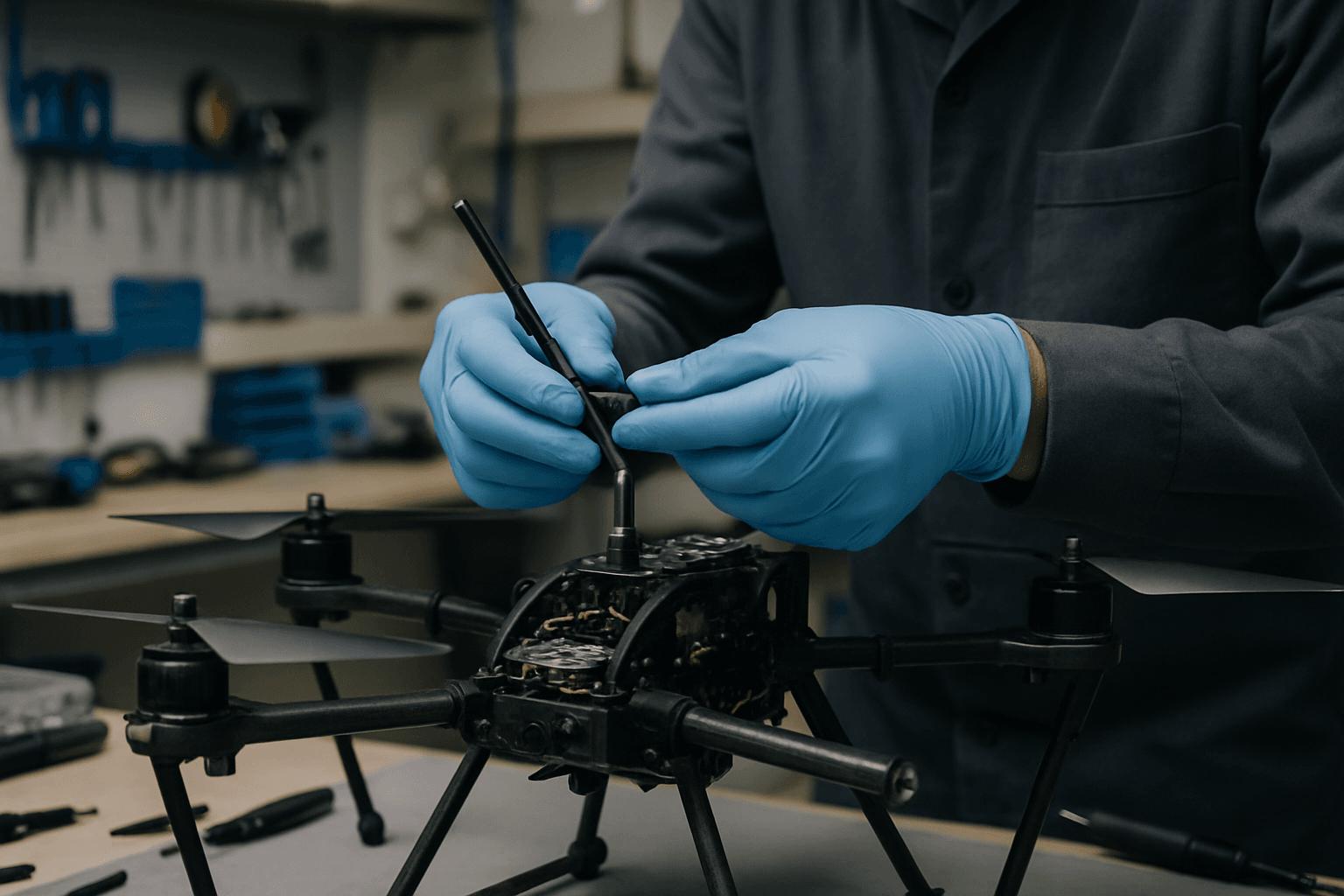Drones have become increasingly popular, offering diverse applications from recreational flying to professional photography and industrial inspections. As technology advances, numerous upgrade options are available to enhance your drone’s performance, extend its capabilities, and ensure safer flights. This guide explores a wide range of drone upgrades, providing insights into how each can improve your drone experience.
Enhancing Flight Performance
1. Batteries: Power Up for Longer Flights
One of the most common limitations of drones is their flight time. Upgrading your drone’s battery can significantly extend its time in the air, allowing you to capture more footage or complete more tasks per flight.
- High-Capacity Batteries: Investing in lithium-polymer (LiPo) batteries with higher milliamp-hours (mAh) can increase flight time. Ensure the battery is compatible with your specific drone model and that the size and weight are suitable.
- Lithium-Ion Batteries: Switching to lithium-ion batteries offers more power without extra weight. They charge faster, last longer, and provide consistent power throughout the flight.
- Battery Maintenance: Regularly calibrate your battery to maintain optimal performance. Avoid overcharging or fully discharging the battery to preserve its lifespan.
- Smart Batteries: Consider batteries with built-in state-of-charge indicators and internal self-balancing features for better management and longevity.
- Multiple Batteries: Purchasing multiple spare batteries is a simple method to extend total flight time, although it will not extend any single flight’s duration.
2. Propellers: Fine-Tune for Efficiency and Stability
Propellers play a critical role in a drone’s flight stability, efficiency, and maneuverability. Upgrading propellers can lead to improved performance and a better flying experience.
- High-Performance Propellers: Replacing stock propellers with lightweight, high-efficiency propellers can improve flight stability and endurance. Carbon-fiber propellers offer superior performance over standard plastic options, enhancing speed, stability, and responsiveness.
- Propeller Guards: Installing propeller guards can reduce the risk of damage during indoor or close-proximity flights, protecting the propellers and improving safety.
- Size and Pitch: Smaller propellers with a high pitch are better for fast maneuvers, while larger ones with low pitches are better for carrying heavier payloads.
- Low-Noise Propellers: Noise reduction props or pads can significantly reduce noise levels, resulting in a quieter flying experience, which is especially useful in populated areas.
- Regular Inspection: Regularly check propellers for damages, cracks, or deformations. Damaged props can increase noise and vibrations, potentially shortening the life of motor bearings.
3. Motors and ESCs: Optimize Power and Efficiency
Upgrading the motors and electronic speed controllers (ESCs) can enhance a drone’s power-to-weight ratio and overall efficiency.
- Brushless Motors: Upgrade to high-efficiency, brushless motors for better power output and energy consumption.
- Compatible ESCs: Use ESCs that are compatible with your drone’s motor to reduce energy loss.
- Motor Maintenance: Ensure motors are functioning properly and are not overworked. Overworked motors can shorten their lifespan and strain the battery.
4. Weight Reduction: Minimize Strain and Maximize Performance
Reducing unnecessary weight can significantly improve a drone’s flight performance and battery life.
- Remove Unnecessary Accessories: Minimize strain on motors and batteries by removing any unnecessary accessories or payloads.
- Lightweight Materials: Opt for lightweight materials in custom builds or modifications to reduce the overall weight of the drone.
5. Aerodynamics: Streamline for Speed and Stability
Improving a drone’s aerodynamic design can reduce air resistance, enhancing flight stability and speed.
- Streamlined Designs: Use streamlined designs to reduce air resistance.
- Payload Mounting: Ensure payloads are compact and securely mounted to avoid drag.
Enhancing Functionality and Capabilities
1. Camera Upgrades: Capture High-Quality Imagery
For many drone users, the camera is a crucial component. Upgrading the camera can significantly improve the quality of aerial photos and videos.
- High-Resolution Cameras: Replace low-resolution cameras with higher quality cameras to capture sharper, more detailed images.
- Gimbal Stabilizers: Add or upgrade the gimbal stabilizer to reduce camera shake during flight, keeping captured images and videos stable. A three-axis gimbal can effectively mitigate wind and movement.
- Camera Filters: Use camera filters to improve image quality in various lighting conditions.
2. Range Extenders and Antennas: Extend Control and Signal Strength
If you need to fly your drone over longer distances, consider upgrading the range extenders and antennas.
- High-Gain Antennas: Add high-gain antennas to increase signal strength and control range.
- Signal Amplifiers: Use signal amplifiers to boost the signal between your controller and drone, allowing for longer transmission distances and better responsiveness.
- Dual-Band Antennas: Dual-band antennas can be made specifically for the DJI V2 Goggles.
3. Obstacle Avoidance Sensors: Improve Safety
Adding obstacle avoidance sensors can significantly improve the safety and automation of drones, especially in complex environments.
- Three-Way or Omnidirectional Sensors: Install sensors to identify obstacles in the surrounding environment and actively avoid or stop.
4. GPS Modules: Enhance Navigation
Adding a GPS module can enable autonomous navigation and more precise flights.
- Autonomous Navigation Systems: Integrate GPS and autonomous navigation systems to program pre-defined routes for specific missions.
5. First Person View (FPV) Goggles: Immersive Experience
FPV goggles provide a real-time video feed from your drone’s camera directly to your eyes, enhancing both flight control and capturing stellar footage.
Enhancing Safety and Reliability
1. Redundancy Systems: Backup and Fail-Safes
Developing redundancy in systems, including backup drones and fail-safe mechanisms, is essential to prevent accidents.
2. Navigation Lights: Improve Visibility
LED navigation lights can help keep track of your drone’s orientation, even in low-light conditions.
3. Remote ID: Compliance and Safety
Ensure your drone is equipped or upgraded to meet remote ID requirements, which are mandated in many areas to ensure compliance and safety.
4. Regular Inspections and Maintenance
- Pre- and Post-Flight Checks: Routine checks are vital to ensuring the optimal performance and safety of your drone.
- Component Checks: Regularly inspect components like propellers, motors, frame, and electronic parts, and replace any damaged or worn-out parts promptly.
Specific Drone Types and Upgrades
1. FPV Drones
FPV (First Person View) drones are designed for racing and freestyle flying, requiring specific upgrades to enhance their agility and speed.
- Motors: Upgrading to higher KV motors can provide better thrust and speed.
- ESCs: High-quality ESCs ensure smooth and efficient power delivery.
- FPV Camera and VTX: Upgrading the FPV camera and video transmitter (VTX) enhances video quality and transmission range.
2. Camera Drones
Camera drones focus on capturing high-quality aerial footage, necessitating upgrades that improve image stability and clarity.
- Gimbals: High-precision gimbals stabilize the camera, mitigating the impact of wind and movement.
- ND Filters: Neutral Density (ND) filters control the amount of light entering the camera, allowing for better exposure and cinematic effects.
3. Thermal Imaging Drones
Thermal imaging drones are used in various applications, including search and rescue, building inspections, and environmental monitoring.
- Thermal Camera: Select a thermal camera that balances performance and weight. The Xinfrared One XH09 is a lightweight and portable option.
- Mounting System: Secure the thermal camera to your drone using a reliable mounting system.
Additional Accessories
- Landing Pads: Protect your drone from the elements and provide a clear area to land.
- Smart Controllers: Enhance your flying experience with intuitive controls and extended flight time.
- Memory Cards: Upgrade to larger microSD cards to accommodate high-resolution videos and photos.
- Charging Hubs: Charge multiple batteries simultaneously to reduce wait times.
- Sunshades: Use remote controller sunshades for better visibility in bright conditions.
Regulatory Compliance and Safety
1. Understanding Regulations
- Local Airspace Restrictions: Double-check local airspace restrictions and obtain any necessary permissions before flying.
- Visual Line of Sight (VLOS): Keep the drone within your unaided vision at all times, unless you have special permissions for Beyond Visual Line of Sight (BVLOS) operations.
2. Building a Safety Mindset
- Risk Assessment: Conduct thorough risk assessments before each flight, considering potential hazards and environmental conditions.
- Emergency Procedures: Familiarize yourself with emergency procedures and have a plan in place for unexpected situations.
Conclusion
Upgrading your drone can significantly enhance its performance, capabilities, and safety. By carefully considering your specific needs and the available upgrade options, you can tailor your drone to meet your unique requirements and elevate your flying experience. Whether you’re a hobbyist, professional photographer, or industrial inspector, the right upgrades can unlock new possibilities and ensure your drone operates at its full potential. Always prioritize safety and regulatory compliance to enjoy responsible and rewarding drone flights.





